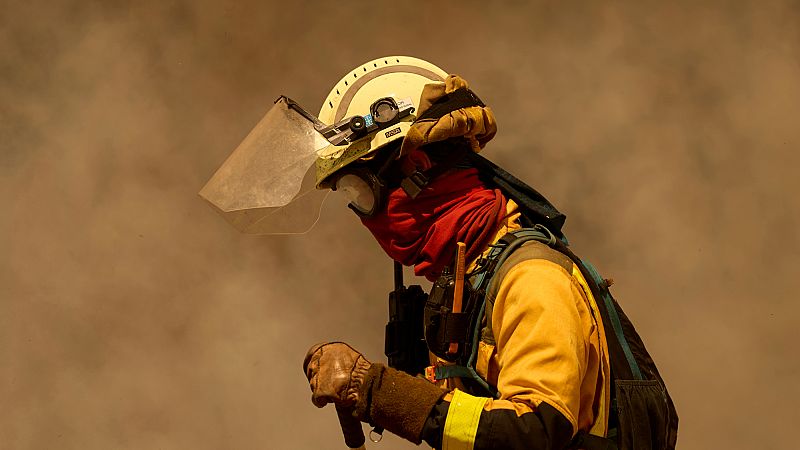Spain's sees worst wildfire season since 1994 with 382,000 hectares burned so far in 2025

All the ingredients came together to create the perfect storm: a particularly dry spring in western Spain, followed by a heatwave that wiped out any remaining moisture in dense, dry ground-level vegetation. Add to that a lack of forest management and limited resources, something fire brigades across the affected autonomous communities have repeatedly warned about.
This combination has resulted in the most severe wave of summer wildfires Spain has seen since 1994, when 437,602 hectares burned, according to data from the Ministry of the Environment.
The European Forest Fire Information System (EFFIS), part of the EU’s Copernicus programme, estimates that 382,607 hectares have burned in Spain this year across 228 fires, a figure that continues to rise as fires rage across Galicia, Asturias, Castilla y León, and Extremadura. These regions, with the exception of Extremadura, are among the oldest and most depopulated in the country.
Depopulation also impacts forest upkeep. Traditional practices like extensive livestock grazing, which once naturally cleaned up the forest during the winter and spring, have largely disappeared.
Of the 10 most destructive wildfires this century in Spain, five have occurred in just the last 15 days of August this year: A Rúa in Orense (44,424 hectares), Uña de Quintana in Zamora (40,781), Benuza in León (32,596), Manzaneda (28,485) and Oímbra (28,485), also in the region of Orense.
What makes this wave of fires especially concerning is that, while the total number of large wildfires (those over 500 hectares) isn't unusually high, they are spreading much more easily due to weather conditions. In 2025, Spain has so far had 52 large fires and we only have to go back to 2022 to exceed that figure.
Across the European Union as a whole, 899,400 hectares of forest have already been burnt, with Slovakia reaching 10 times its historical average for this time of year and Cyprus seven times.
Sánchez to declare first emergency zones
Speaking from the advanced command post in La Granja, Cáceres, Prime Minister Pedro Sánchez announced that the first areas affected by the fires will be officially declared emergency zones next week.
"There are still difficult hours ahead, let's not get complacent," he said alongside the president of Extremadura, Maria Guardiola.
Sánchez emphasised that the climate emergency is worsening every year and reiterated the need for a national pact to address the growing frequency of extreme weather events caused by rising temperatures. He plans to present a legislative proposal in September to the scientific community, trade unions, and relevant institutions.
Latest updates on Spain’s wildfire crisis
Three of the five people injured in the Castilla y León fires remain in critical condition. The death toll stands at four - three volunteers and one officer from Soria, who was assigned to help in León and died when his machinery overturned during firefighting operations.
The fire in A Rúa or Larouco (Ourense) has now burned 44,424 hectares, surpassing Chandrexa de Queixa to become the largest wildfire in Galicia's recorded history, and the largest in Spain so far this century.
A major fire is threatening the León side of the Picos de Europa, putting communities in Tierra de la Reina and Valle de Valdeón on edge. In the latter, 775 residents from 11 towns have been evacuated. This area is part of a historic national park crucial to the biodiversity of the Cantabrian Mountains.
According to the Ministry of the Interior, the Guardia Civil and National Police have evacuated 31,130 people across the country. Authorities have also arrested 31 individuals and placed 92 under investigation for their suspected roles in starting the fires.
Today

